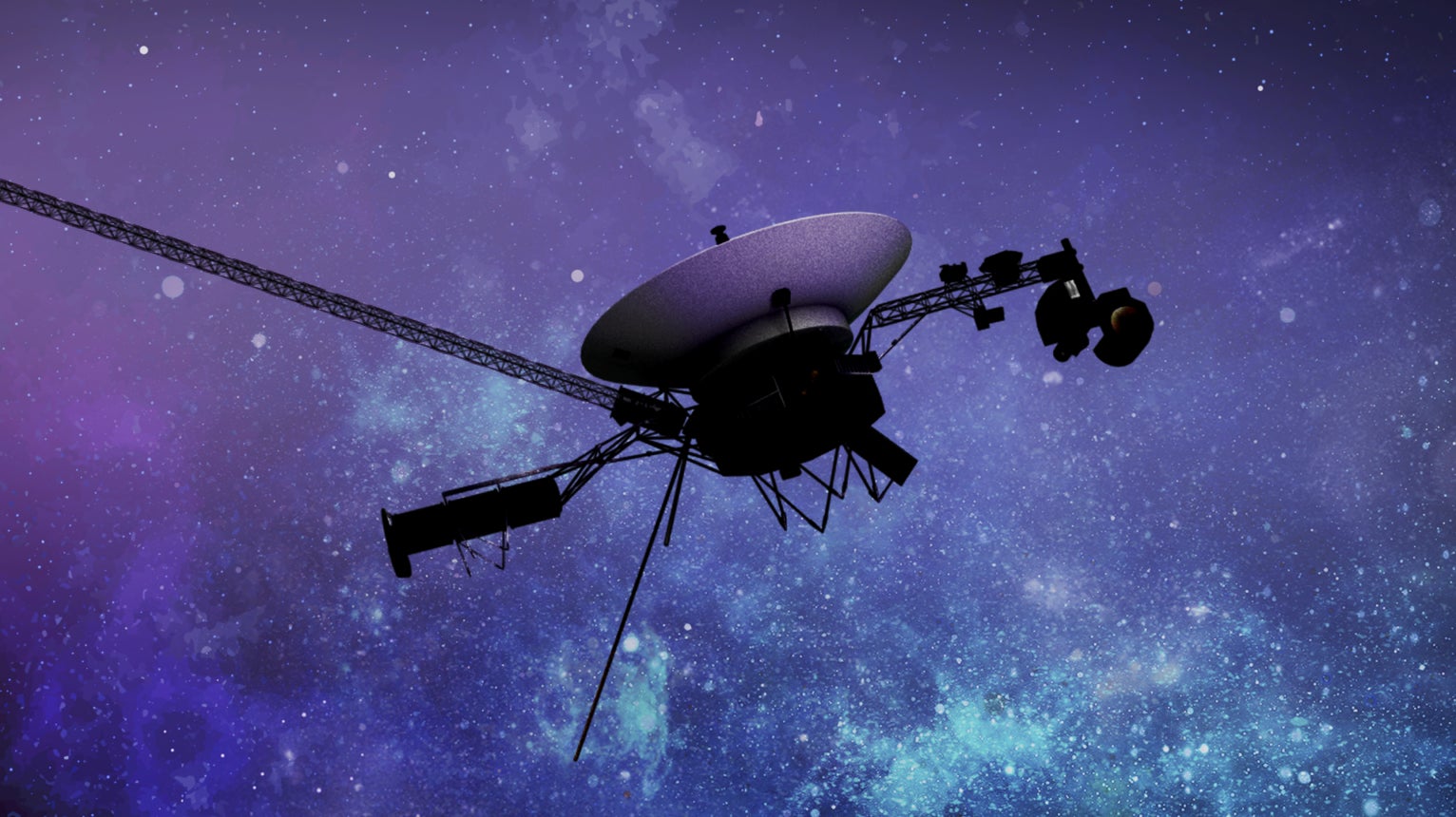NASA's Voyager 1 probe has been glitching for months and we finally know why
Corrupted memory hardware is causing the mission to transmit gibberish, but there may be a way to fix it

Watch live: The 2024 total solar eclipse
Suggested Reading
After months of sending unusable data to mission control, there’s finally hope for the Voyager 1 spacecraft. NASA engineers pinpointed the cause behind the mission’s odd anomaly, and think they can help the interstellar probe make sense again.
Related Content
Engineers at NASA’s Jet Propulsion Laboratory believe the Voyager 1 spacecraft has been sending nonsensical data due to corrupted memory hardware in the spacecraft’s flight data system (FDS). “The team suspects that a single chip responsible for storing part of the affected portion of the FDS memory isn’t working,” NASA wrote in an update.
FDS collects data from Voyager’s science instruments, as well as engineering data about the health of the spacecraft, and combines them into a single package that’s transmitted to Earth through one of the probe’s subsystems, the telemetry modulation unit (TMU), in binary code.
FDS and TMU have been having trouble communicating with one another. As a result, TMU has been sending data to mission control in a repeating pattern of ones and zeroes. NASA’s engineers aren’t quite sure what corrupted the FDS memory hardware; they think that either the chip was hit by an energetic particle from space or that it’s just worn out after operating for 46 years.
Voyager 1 launched in 1977, less than a month after its twin probe, Voyager 2, began its own journey to space. The probe ventured into interstellar space in August 2012, becoming the first spacecraft to leave the heliosphere.
The problem first began in May 2022, when the probe suddenly started sending nonsensical attitude articulation and control (AACS) data. Engineers resolved the issue by sending the telemetry data through one of the spacecraft’s other computers. In December 2023, Voyager 1 started speaking gibberish again.
On March 1, the team sent a “poke” to the spacecraft’s data system, a command that gently prompts FDS to try different sequences in its software package in an effort to pinpoint the corrupted section. Two days later, Voyager 1 sent a signal that contained a readout of the entire FDS memory, which helped the team pinpoint the source of the glitch by comparing this memory readout with a previous one to look for discrepancies in the code.
“Using the readout, the team has confirmed that about 3% of the FDS memory has been corrupted, preventing the computer from carrying out normal operations,” NASA wrote in its update.
The engineers are hoping to resolve the issue by finding a way for FDS to operate normally without the corrupted memory hardware, enabling Voyager 1 to begin transmitting data about the cosmos and continue its journey through deep space.